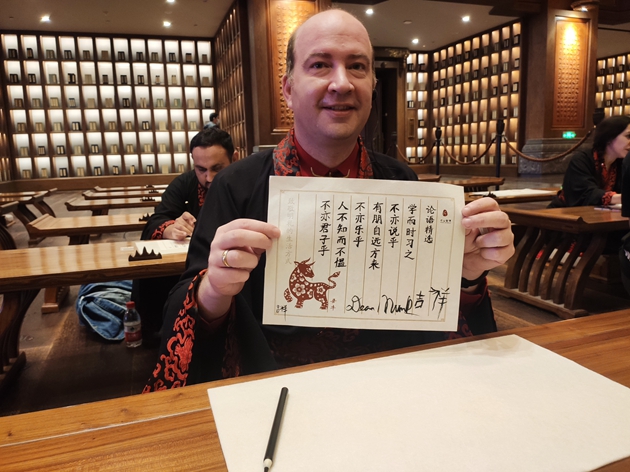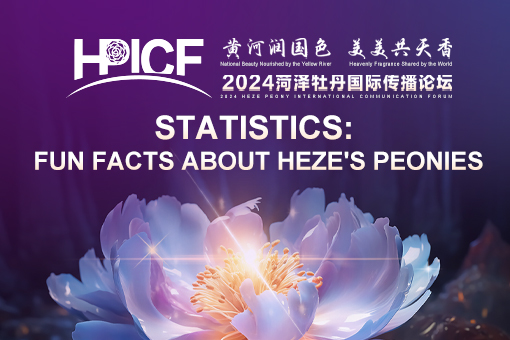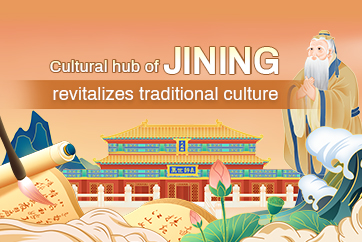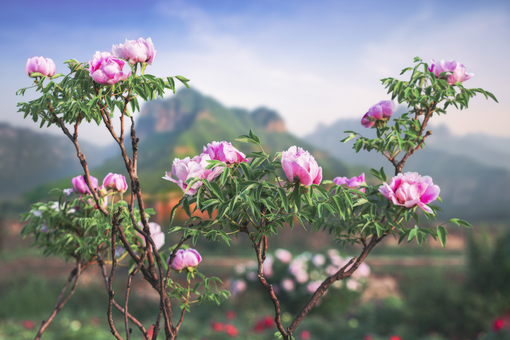Shandong full of ancient treasures and modern splendor
By Dean Gordon Munk| (chinadaily.com.cn)| Updated : 2021-11-05
Print PrintEditor's note: A group of foreign reporters participated in the "World Media Focusing on the Culture of Shandong" trip that took them to Qufu, Tai'an, and Jinan from Sept 27 to 30. One of the participants was Dean Gordon Munk, an online influencer from Canada, who has detailed his firsthand experience on the trip here.
In Jinan and looking to further discover Shandong's rich history and culture? Within just a short distance from the Shandong capital of Jinan, there are abundant opportunities to visit the sites and explore the culture of ancient China.
In just over 30 minutes of travel time from Jinan, you can discover Qufu, an ancient city that dates back to Shao Hao, one of the five legendary rulers before recorded history in China. Surrounded by the fresh feeling of trees planted long ago, you can still see his tomb today just northeast of the city, a pyramid shaped structure with square stones.
What Qufu is even better known for is being the birthplace of the world-renowned philosopher Confucius, who is often considered as one of the most influential people in world history and whose philosophy still has strong influence today. He created simple rules for living 2,500 years ago that people still read and follow.
In Qufu, you can visit what is collectively known as the three Confucian sites, which are the Confucius Family Mansion, Confucius Temple, and Confucius Cemetery. This area has been listed as a UNESCO World Heritage Site and is a must see place for people interested in history, philosophy, and culture.

Dean Gordon Munk displays his transcription of Confucian classics at the Nishan World Center for Confucian Studies in Qufu, East China's Shandong province on Sept 28. [Photo provided to chinadaily.com.cn]
The temple was built to commemorate Confucius in the 6th to 5th centuries BC and gives off a feeling of going back to a time where online media and the distractions of modern life were replaced by deep thought regarding the world around us and how everything fits together. Although it has been destroyed and reconstructed over the years, there are more than 100 buildings to admire.
Just around the temple lies the Confucius Family Mansion where many of life's intricacies were pondered by both Confucius himself and his direct descendants. Covering a total area of about 16 hectares, this historical gem lets you take in the essence of one of history's most influential families. As you walk around the courtyards and halls you can feel the peace and tranquility of deep thought.
Near Confucius Temple and Confucius Family Mansion lies the Confucius Cemetery. Covering about 199 hectares, it is China's largest and best preserved cemetery with over 2,000 years of active use. People able to prove their lineage to Confucius are still buried here today. Here you can see Confucius's own final resting place, as well as that of his son, his grandson, and approximately 100,000 descendants. Often referred to as the Confucius forest, it has over 20,000 trees planted by the Confucius family. At first this gives it more of a forest feel and only on closer inspection do you notice the tombstones throughout.
Just as Confucius said, "You cannot open a book without learning something," I say you can't visit Qufu without learning something about history, Chinese culture, or even yourself.

 Statistics: Fun facts about Heze's peonies
Statistics: Fun facts about Heze's peonies  Cultural hub of Jining revitalizes traditional culture
Cultural hub of Jining revitalizes traditional culture  Peonies bloom in Heze
Peonies bloom in Heze